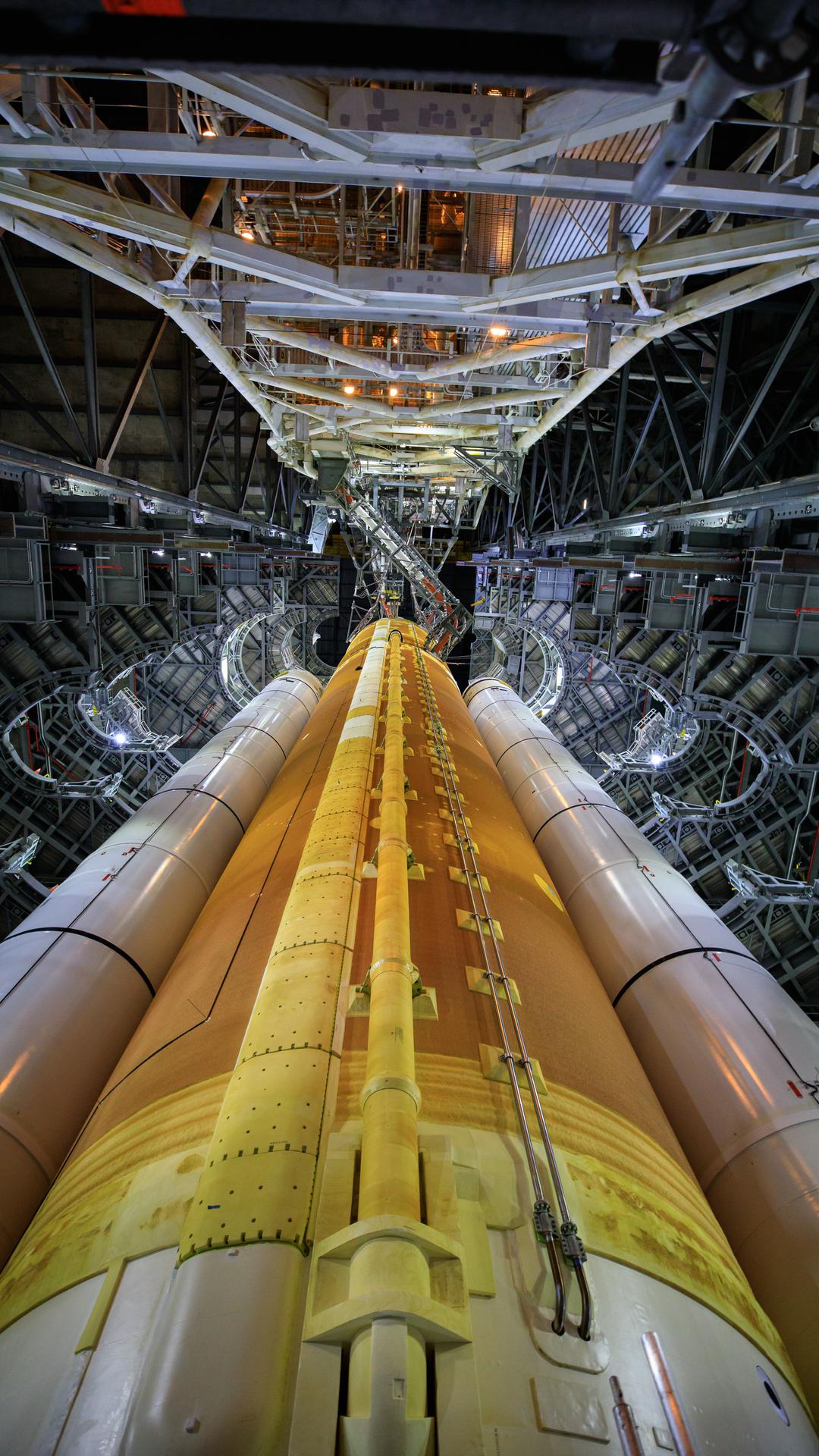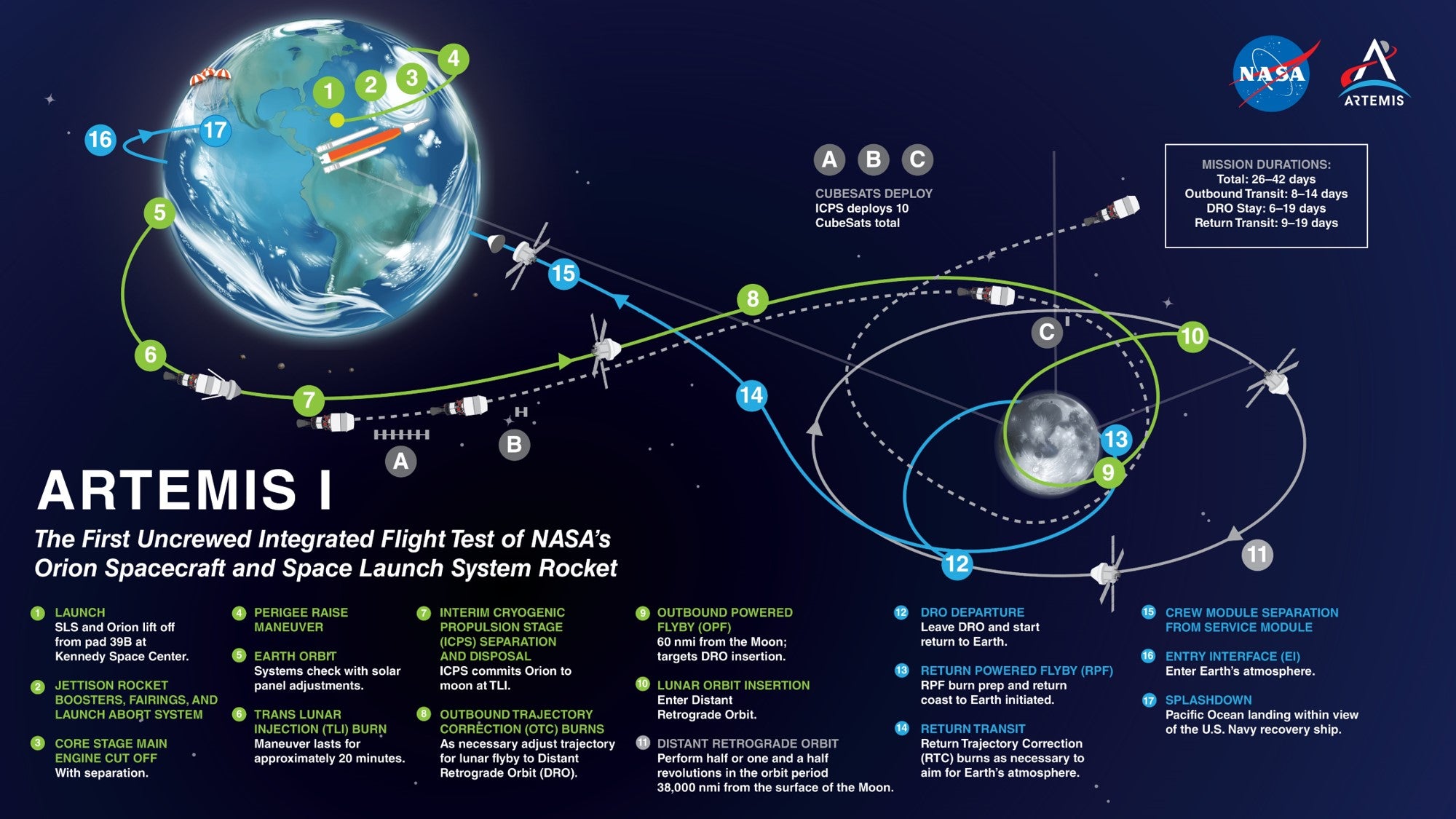Nasa sets date for final test of Moon rocket, expects no problems due to war in Ukraine
If the “wet dress rehearsal” goes well, Nasa’s SLS and Orion could launch as soon as early May.

Your support helps us to tell the story
From reproductive rights to climate change to Big Tech, The Independent is on the ground when the story is developing. Whether it's investigating the financials of Elon Musk's pro-Trump PAC or producing our latest documentary, 'The A Word', which shines a light on the American women fighting for reproductive rights, we know how important it is to parse out the facts from the messaging.
At such a critical moment in US history, we need reporters on the ground. Your donation allows us to keep sending journalists to speak to both sides of the story.
The Independent is trusted by Americans across the entire political spectrum. And unlike many other quality news outlets, we choose not to lock Americans out of our reporting and analysis with paywalls. We believe quality journalism should be available to everyone, paid for by those who can afford it.
Your support makes all the difference.Nasa has set a date in mid-March for the last major test of its massive Moon rocket for its first orbital test flight, although the space agency has yet to firm up the date of the launch itself.
In a Thursday afternoon teleconference, Nasa officials discussed the upcoming “wet dress rehearsal” for the Space Launch System, or SLS, the largest rocket Nasa has constructed since the Saturn V of the Apollo program. They also discussed potential launch windows for its first test flight, and acknowledging Russia’s invasion of Ukraine, noted that none of the rocket’s essential components are sourced from either nation.
Just as the Saturn V carried astronauts to the Moon in the Apollo spacecraft, SLS is designed to carry astronauts back to the Moon in the new Orion spacecraft as part of Nasa’s Artemis Moon program. Artemis III is scheduled to return humans to the Moon sometime in 2025, following the crewed lunar flyby of Artemis II sometime in May 2024.
Artemis I, which Nasa hopes to launch as soon as May 7, will involve an uncrewed test flight of Orion to the Moon, beyond, and then back to Earth.

But first, the spacecraft and its massive launch vehicle have to roll out from the Vehicle Assembly Building and to launch complex 39B at Kennedy Space Center in Cape Canaveral, Florida for a wet dress rehearsal of the SLS launch and launch scrub sequence. On 17 March, at 6 p.m., a massive crawler-transporter will begin carrying the 7.7 million kilogram, 98-meter tall rocket stack out of the building.
“It’s really going to be a sight,” said NASA exploration ground systems manager Michael Bolger. “It’s something that we’re really looking forward to. It takes about an hour if things go well to move from the high bay to just outside of the [vehicle assembly building].”
At the crawler’s top speed of just more than a kilometer per hour, it will take around 11 hours for the rocket to traverse the four miles to the launch pad, Mr Bolger said, the trip itself is part of the testing Nasa is conducting on the rocket and ground systems.

“The next time when we roll, when we actually roll out for launch, we will refer to that four-mile trip as the first four miles of Nasa’s return to the Moon,” he said.
It will take roughly two weeks on the launch pad to prepare the SLS and Orion for the wet dress rehearsal, according to Nasa Deputy associate administrator for exploration systems development Tom Whitmeyer, wet because the test involves filling the rocket with cryogenic liquid oxygen and liquid hydrogen fuel. The Nasa team will practice a launch countdown, getting as close as about nine seconds to launch before practicing the scrubbed launch procedures, and then pumping fuel and oxidizer out of the rocket.
All told, SLS and Orion may remain on the launchpad for around a month for testing before crawling back to the vehicle assembly building for final preparations for launch, according to Artemis mission manager Mike Serafin. Exactly how long SLS will remain on the pad, and how long additional work will take to prepare the rocket for its first flight, will be determined by how things go during the wet dress rehearsal.
Consequently, “we need to make sure we get through that testing,” Mr Whitmeyer said, “before we set a launch commitment date.”
But Nasa can rule out some launch dates — Mr Bolger acknowledged that the amount of work remaining means the earliest launch window of 8 April through 23 April is no longer possible. The next launch windows, determined by the positions of the Moon and Earth, range from 7 May through 12 May, 6 June through 16 June, and 29 June through 12 July.
The Artemis program has already seen a number of delays. Artemis III was originally expected to land humans on the Moon in 2024, but Nasa admitted in November it would miss that mark. Artemis I, originally scheduled to launch on 12 February, was delayed until sometime in March, and then pushed to an indefinite time after the wet dress rehearsal was delayed earlier this month.
All three Nasa officials noted that launching a new spacecraft for the first time is a lengthy process and that the space agency is learning how to speed the process for future launches by careful testing and consideration now.
Even if Nasa is pleased with the results of the wet dress rehearsal, outside forces could lead to further delays. Although US officials on Thursday morning said that US and Russian cooperation in space would continue despite the Russian invasion of Ukraine, the situation is fast-moving and diplomatic relations between the two countries are strained.
At the very least, Mr Serafin said, almost all of the hardware involved in the SLS and Orion is manufactured in the US, and unlikely to be affected by the conflict.
“Having an industrial base here in the US, or with partners that are friendly to us, is a key element of this enterprise.”
Join our commenting forum
Join thought-provoking conversations, follow other Independent readers and see their replies
Comments